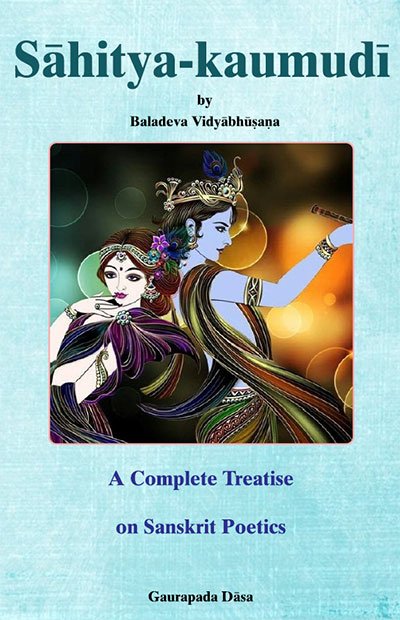Sahitya-kaumudi by Baladeva Vidyabhushana
by Gaurapada Dāsa | 2015 | 234,703 words
Baladeva Vidyabhusana’s Sahitya-kaumudi covers all aspects of poetical theory except the topic of dramaturgy. All the definitions of poetical concepts are taken from Mammata’s Kavya-prakasha, the most authoritative work on Sanskrit poetical rhetoric. Baladeva Vidyabhushana added the eleventh chapter, where he expounds additional ornaments from Visv...
Text 10.237
उदाहरणम्,
नासिका-मौक्तिकं यस्याः पद्म-रागो'धर-त्विषा ।
व्रज-नाथ पुरः सेयं तरुणी-मणिर् ईक्ष्यताम् ॥
udāharaṇam,
nāsikā-mauktikaṃ yasyāḥ padma-rāgo'dhara-tviṣā |
vraja-nātha puraḥ seyaṃ taruṇī-maṇir īkṣyatām ||
By the splendor of her lips, her nose pearl is a ruby. O Kṛṣṇa, this jewel of a young woman is worth a look.
atra mauktikāpekṣayādharasya praguṇa-varṇatā.
Compared to the pearl, the lips have a more eminent color. (The pearl took redness from the lips.)
Commentary:
This is Jagannātha’s example:
nīto nāsāntikaṃ tanvyā mālatyāḥ kusumotkaraḥ |
bandhūka-bhāvam āninye rāgeṇādhara-vartinā ||“The jasmine flowers the slender girl put near her nose acquired the nature of bandhūka flowers on account of the rāga (redness, passion) on her lips” (Rasa-gaṅgādhara, KM p. 513).
Nāgeśa Bhaṭṭa says that even an expression such as this is the tad-guṇa ornament:
padmarāgāyate nāsā-mauktikaṃ te’dhara-tviṣā,
“By the splendor of your lips, your nose pearl looks like a ruby.”[1]
Here tad-guṇa involves an elliptical simile (luptopamā).
